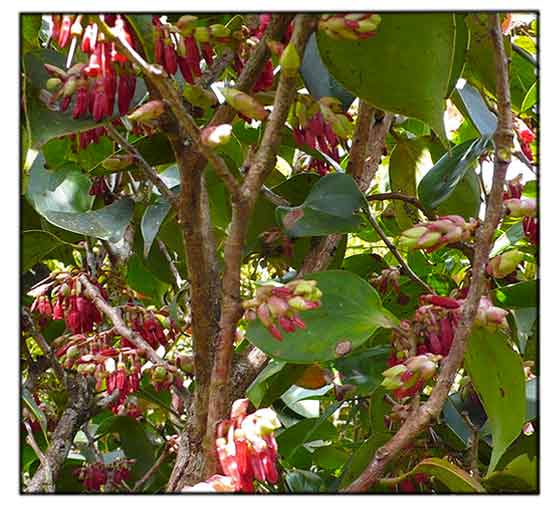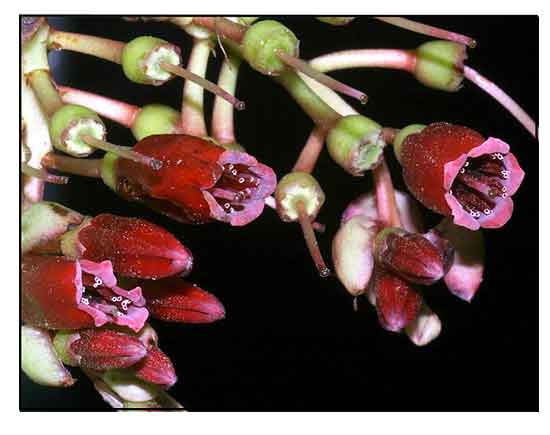
Family • Ericaceae
Lusong
Vaccinium barandanum S.Vidal.
DUSONG
| Scientific names | Common names |
| Vaccinium barandanum S.Vidal | Alimomosong (Bontok) |
| Accepted infraspecifics (3) | Dusong (Igorot) |
| Vaccinium barandanum var. barandanum | Ladew (Kankanay) |
| Vaccinium barandanum var. cagayanense H.F.Copel | Loso (Igorot) |
| Vaccinium barandanum var. hutchinsonii (Merr.) H.F.Copel | Losong (Igorot) |
| Vaccinium hutchinsonii Merr. | Lusong (Igorot) |
| Vaccinium barandanum S.Vidal is an accepted species. KEW: Plants of the World Online | |
Botany Distribution Constituents
Studies Availability |
December 2023
![]()
 |
| PHOTOS / ILLUSTRATIONS |
| IMAGE SOURCE: Vaccinium barandanum / Flowering twigs / Copyright © 2012 by Ravan Schneider (contact: pieter.pelser@canterbury.ac.nz)) [ref. DOL56152] / Non-Commercial Use / image modified / click on image or link to go to source page / Phytoimages.siu.edu |
| OTHER IMAGE SOURCE: Vaccinium barandanum / Flowers / Copyright © 2012 by Ravan Schneider (contact: pieter.pelser@canterbury.ac.nz)) [ref. DOL56151] / Non-Commercial Use / image modified / click on image or link to go to source page / Phytoimages.siu.edu |
Additional
Sources and Suggested Readings |
• |
DOI: It is not uncommon for links on studies/sources to change. Copying and pasting the information on the search window or using the DOI (if available) will often redirect to the new link page. (Citing and Using a (DOI) Digital Object Identifier) |
| List of Understudied Philippine Medicinal Plants |
| New plant names needed The compilation now numbers over 1,300 medicinal plants. While I believe there are hundreds more that can be added to the collection, they are becoming more difficult to find. If you have a plant to suggest for inclusion, native or introduced, please email the info: scientific name (most helpful), local plant name (if known), any known folkloric medicinal use, and, if possible, a photo. Your help will be greatly appreciated. |
• |
 |

 Gen info
Gen info Properties
Properties